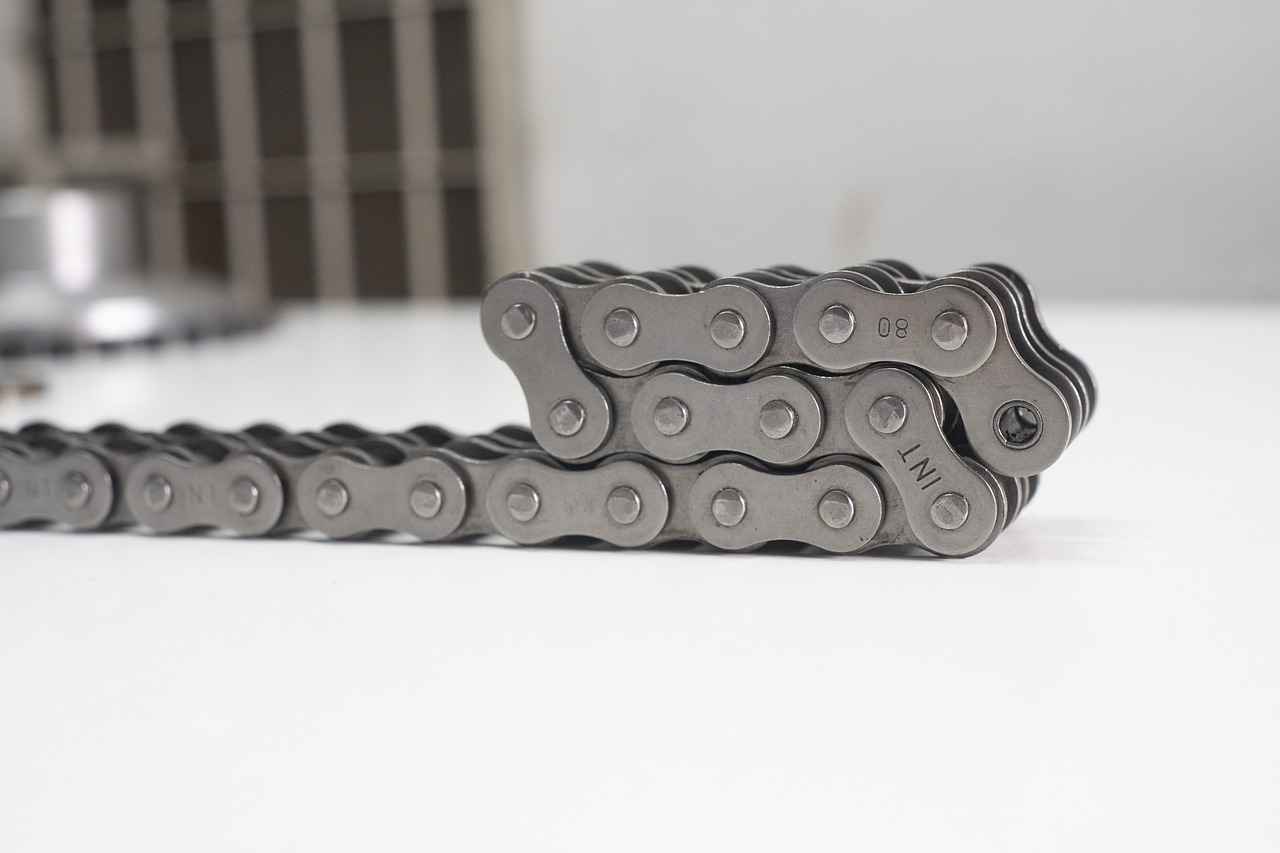When considering a construction or landscaping project, one of the most critical decisions you will face is how to manage your equipment needs. Renting a skid steer can be an excellent solution for many contractors and DIY enthusiasts alike. However, understanding the costs associated with skid steer rentals is essential for effective budgeting and project planning. This article delves into the various factors that influence skid steer rental costs, offering insights into pricing structures, regional variations, and key considerations for potential renters.
On average, skid steer rental rates range from $200 to $600 per day, depending on various factors. For longer rental periods, many companies offer discounts, with weekly rates averaging between $800 and $2,000. Understanding these average costs can significantly aid in budgeting for your upcoming project.
Several key elements affect the pricing of skid steer rentals:
- Type of Equipment: Different models come with varying capabilities, which can impact the rental price.
- Rental Duration: Short-term rentals may have different pricing structures compared to long-term rentals.
- Geographical Location: Rental prices can vary significantly based on where you are located.
The type of skid steer you select plays a significant role in determining rental costs. For instance, standard skid steers are typically more affordable than high-capacity models, which are designed for heavier loads and more demanding tasks. This difference in capabilities often translates to a higher rental price for advanced models.
Standard skid steers generally cost less, with daily rates around $200 to $400. In contrast, high-capacity skid steers can command rates of $400 to $600 per day due to their enhanced performance and capabilities.
It’s important to note that many rental companies charge extra for attachments, such as buckets or forks. Understanding these additional costs is essential for accurate budgeting. Typically, attachments can add another $50 to $150 per day to the overall rental cost.
The length of time you need the skid steer can also affect the rental price. Short-term rentals often come with higher daily rates, while long-term rentals can provide savings through weekly or monthly pricing options.
Rental prices can vary significantly based on geographic location. For example, urban areas often have higher rental rates due to increased demand and operational costs. Conversely, rural areas may offer more competitive pricing.
In urban settings, you might pay up to 20-30% more for skid steer rentals compared to rural areas. This price difference is often attributed to higher demand and limited availability in metropolitan regions.
Delivery fees can vary based on distance and the rental company’s policies. Typically, you can expect to pay anywhere from $50 to $150 for delivery, depending on how far the equipment needs to travel.
Beyond the basic rental fee, there are several additional costs to consider, including:
- Insurance: Protecting your rental with insurance can prevent unexpected costs.
- Fuel: Fuel costs can impact your overall rental expenses, particularly for longer projects.
- Maintenance Fees: Some companies may charge for maintenance or wear and tear on the equipment.
Finding the best rental rates requires diligent research and comparison. Utilizing online platforms and local rental companies can yield significant savings. Online platforms often provide competitive pricing and user reviews, making it easier to compare options and find the best deal for your needs.
Local rental companies may have lower overhead costs and can provide personalized service, often leading to better rental rates and terms. It’s worth reaching out to multiple providers to compare prices and services.
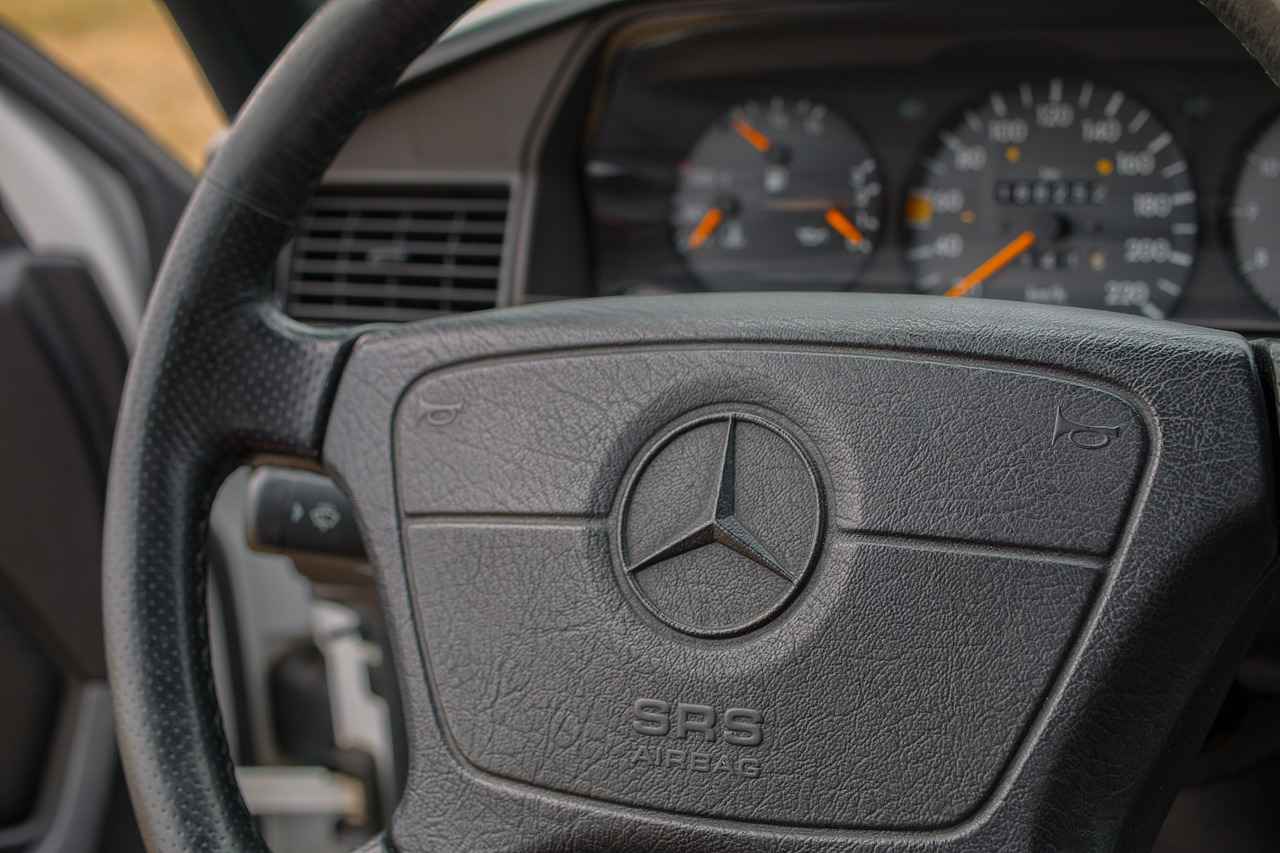
What Are the Average Skid Steer Rental Rates?
When considering a construction or landscaping project, one of the essential pieces of equipment you might need is a skid steer. However, before making a decision, it’s crucial to understand what the average skid steer rental rates are. This knowledge will enable you to budget effectively and avoid any unexpected expenses.
Skid steer rental rates can vary widely based on several factors. On average, you can expect to pay between $200 and $600 per day, depending on the model and attachments required. Weekly rates typically range from $800 to $2,000, while monthly rentals can cost anywhere from $2,500 to $6,000. Understanding these average costs will help you budget effectively for your project.
Several elements affect the pricing of skid steer rentals, including:
- Equipment Type: Different models come with varying capabilities and features.
- Rental Duration: Short-term rentals often have different pricing structures compared to long-term rentals.
- Geographical Location: Rental prices can vary significantly based on where you are located.
The type of skid steer you choose can significantly impact rental prices. For instance, standard skid steers typically have lower rental rates compared to high-capacity models, which are designed for heavier loads and more demanding tasks. Always consider the specific requirements of your project when selecting a model.
Many rental companies charge extra for attachments, such as buckets or forks. Understanding these additional costs is essential for accurate budgeting. Be sure to ask about attachment rates when inquiring about skid steer rentals.
The length of time you need the skid steer can also affect the rental price. For example, daily rates might be higher if you only need the equipment for a short period, while weekly or monthly rentals often come with discounted rates. It’s advisable to assess your project timeline before deciding on the rental duration.
Rental prices can vary significantly based on geographic location. Urban areas often have higher rental rates due to increased demand and operational costs, while rural areas may offer more competitive pricing. Understanding these regional differences can help you make informed decisions when renting equipment.
In urban settings, the demand for skid steers is generally higher, which can drive up rental prices. Conversely, rural areas might have lower demand and therefore lower rates. It’s essential to research local rental options to find the best deal.
Delivery fees can vary based on distance and the rental company’s policies. Some companies may offer free delivery within a certain radius, while others may charge a flat fee or a per-mile rate. Understanding these charges is crucial for accurate budgeting.
Beyond the basic rental fee, there are several additional costs to consider, including:
- Insurance: Often a critical consideration when renting heavy equipment.
- Fuel: Fuel costs can impact your overall rental expenses, especially for longer projects.
- Maintenance Fees: Some rental companies may charge for maintenance or repairs during your rental period.
Insurance is often a critical consideration when renting heavy equipment. Understanding the coverage options can protect you from unexpected costs arising from accidents or equipment damage.
Fuel costs can significantly impact your overall rental expenses, especially for longer projects. Knowing the fuel efficiency of the skid steer can help you estimate these costs accurately and avoid surprises.
Finding the best rental rates requires research and comparison. Utilizing online platforms and local rental companies can yield significant savings. Online platforms often provide competitive pricing and user reviews, making it easier to compare options and find the best deal for your needs.
Online rental platforms often provide competitive pricing and user reviews, facilitating the comparison process and helping you find the best deal for your needs.
Local rental companies may have lower overhead costs and can provide personalized service, often leading to better rental rates and terms. Always consider reaching out to these businesses for potential savings.
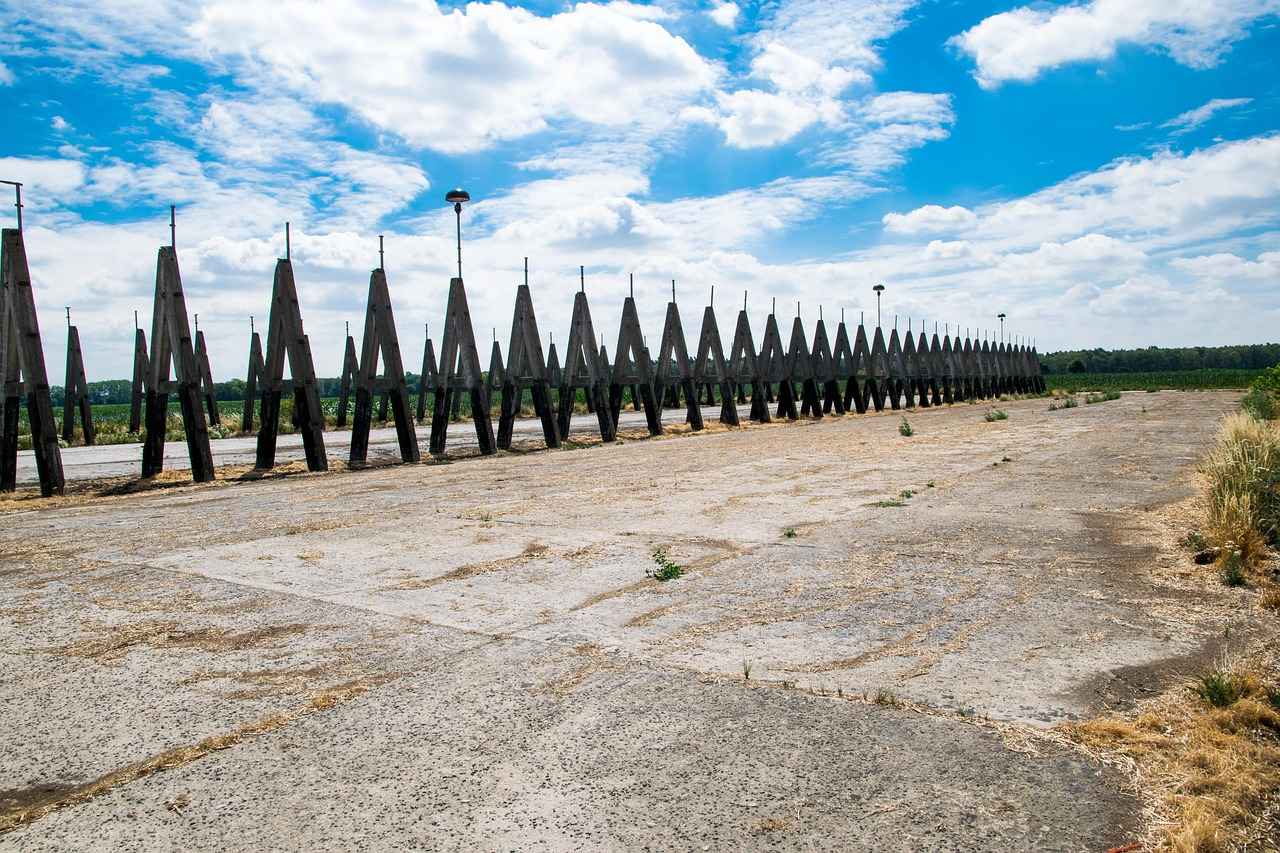
What Factors Influence Skid Steer Rental Prices?
When considering the rental of a skid steer, understanding the factors that influence pricing is essential for making an informed decision. This article explores the key elements that can affect rental costs, ensuring you can budget effectively and find the best deal for your project.
Several crucial elements affect the pricing of skid steer rentals:
- Equipment Type: The specific model and its capabilities can greatly affect the rental price. Standard models generally cost less than high-capacity or specialized skid steers.
- Rental Duration: The length of time you need the equipment can lead to different pricing structures. Short-term rentals often come with higher daily rates compared to long-term agreements.
- Geographical Location: Rental prices can fluctuate significantly based on your location. Urban areas may have higher rates due to increased demand, while rural locations might offer more competitive pricing.
- Seasonal Demand: Prices can also vary with the seasons. During peak construction periods, rental rates may rise due to higher demand.
The type of skid steer you choose can significantly influence rental prices. For instance, standard skid steers are typically more affordable, while high-capacity models, designed for heavier loads and demanding tasks, will cost more. Additionally, specialized attachments may incur extra charges, so it’s important to clarify what is included in your rental agreement.
The rental duration is another critical factor in determining the overall cost. Most rental companies offer daily, weekly, or monthly rates. While short-term rentals might seem convenient, they often come with higher daily rates. Conversely, committing to a longer rental period can lead to significant savings. It’s advisable to evaluate your project timeline carefully to choose the most cost-effective option.
Rental prices can vary widely based on geographic location. For example, urban areas typically experience higher rental rates due to increased demand and operational costs. In contrast, rural areas may offer more competitive pricing as rental companies face less demand. Understanding these regional differences is crucial for making informed decisions about where to rent your skid steer.
Delivery fees are another important consideration that can affect your overall rental costs. These fees can vary based on the distance from the rental company to your job site and the specific policies of the rental provider. Be sure to ask about delivery options and associated costs upfront to avoid unexpected expenses.
Beyond the basic rental fee, several additional costs may arise when renting a skid steer:
- Insurance: Many rental companies require insurance, which can protect you from unexpected damages or liabilities.
- Fuel: Fuel costs can significantly impact your total expenses, especially for longer projects. Understanding the fuel efficiency of the skid steer can help you estimate these costs accurately.
- Maintenance Fees: Depending on the rental agreement, you may be responsible for maintenance costs during the rental period.
To secure the best rental rates, it’s essential to conduct thorough research. Utilize online platforms and compare local rental companies to find competitive pricing. Online rental platforms often provide user reviews and detailed information, making it easier to evaluate options. Local rental companies may offer personalized service and lower overhead costs, leading to better rental rates.
By understanding these factors, you can navigate the skid steer rental market more effectively and make informed decisions that align with your project needs.
How Does Equipment Type Affect Rental Costs?
When considering the rental of a skid steer, one of the most critical factors to evaluate is the type of equipment you need. The selection of a skid steer can have a profound impact on rental prices, as different models offer varying features and capabilities. Understanding these differences is essential for making an informed decision that aligns with your project requirements and budget.
The type of skid steer you choose can significantly influence rental costs. Various models come equipped with different power levels, lifting capacities, and specialized features. For instance, a standard skid steer is often more affordable to rent than a high-capacity model, which is designed for demanding tasks and heavier loads. This variance in capabilities directly correlates with the rental price, making it essential to assess your project needs before making a selection.
- Standard Skid Steers: These are versatile machines suitable for general landscaping and light construction tasks.
- High-Capacity Skid Steers: Designed for heavy-duty applications, these models can handle larger loads and are typically more expensive to rent.
- Compact Skid Steers: Ideal for tight spaces, these machines are easier to maneuver but may come with limitations in power.
- Track Skid Steers: Equipped with tracks instead of wheels, these models provide better traction and stability on uneven terrain but usually come at a higher rental rate.
Beyond the basic classification of skid steers, additional features can also affect rental costs. For example, models equipped with advanced technology, such as GPS tracking or automated controls, may command higher rental rates due to their enhanced efficiency and ease of use. Furthermore, specialized attachments like buckets, forks, or grapples can incur extra charges, so it is essential to inquire about these costs when budgeting for your project.
The rental duration can also play a role in the type of skid steer you choose. For short-term projects, a standard model may suffice, while longer-term projects might justify the investment in a more robust high-capacity skid steer. Rental companies often provide tiered pricing based on the length of the rental period, which can impact your overall costs.
When renting a skid steer, it’s crucial to consider not only the base rental price but also any additional costs associated with the equipment type. These may include:
- Insurance: Protecting your rental from damage or theft may require additional coverage.
- Fuel Costs: Different models have varying fuel efficiencies, which can affect your overall expenses.
- Delivery Fees: Depending on the rental company’s policies, delivery charges can vary based on distance and equipment type.
In conclusion, understanding how equipment type affects skid steer rental costs is vital for making informed decisions. By evaluating your project’s specific needs and considering the various factors that influence pricing, you can choose the right skid steer that meets both your operational requirements and budget constraints.
What Are the Costs of Standard vs. High-Capacity Skid Steers?
When considering the rental of skid steers, understanding the cost differences between standard and high-capacity models is crucial for effective budgeting and project planning. These two categories of skid steers serve different purposes and are designed for varying workloads, which significantly affects their rental rates.
Standard skid steers are versatile machines typically used for light to moderate tasks. They are ideal for landscaping, small construction projects, and general maintenance work. The rental rates for these models are generally lower compared to high-capacity skid steers, making them a popular choice for those with budget constraints.
In contrast, high-capacity skid steers are engineered for heavy-duty tasks. These machines can handle larger loads and are often equipped with more powerful engines, advanced hydraulics, and enhanced stability features. As a result, they command a higher rental price, reflecting their capability to tackle more demanding jobs.
On average, standard skid steers can cost anywhere from $200 to $500 per day, while high-capacity models may range from $400 to $800 per day. The price difference is largely attributed to the enhanced performance and durability of high-capacity models, which are designed to withstand rigorous use.
- Load Capacity: Higher load capacities correlate with increased rental rates.
- Rental Duration: Longer rental periods often come with discounted rates.
- Geographic Location: Rental prices can vary based on local demand and availability.
- Attachments: Additional costs may apply for specialized attachments.
When renting a skid steer, it is essential to factor in potential additional costs. For instance, many rental companies charge extra for attachments like buckets or forks, which can significantly increase the overall rental expense. Moreover, insurance fees and fuel costs should also be anticipated, as they can add up quickly and impact your budget.
Choosing between a standard and high-capacity skid steer depends on the specific requirements of your project. If you are dealing with light tasks, a standard skid steer may be sufficient and more economical. However, for projects that demand heavy lifting or intensive work, investing in a high-capacity model could save time and enhance efficiency.
To find the most competitive rental rates, consider exploring both online platforms and local rental companies. Online platforms often provide a wider range of options and user reviews, allowing you to compare prices and features easily. Local companies may offer personalized services and lower overhead costs, potentially leading to better rental terms.
In summary, understanding the differences in rental costs between standard and high-capacity skid steers is essential for making informed decisions. By considering factors such as load capacity, rental duration, and additional costs, you can select the right equipment that meets your project’s needs while staying within budget.
Are Attachments Included in Rental Prices?
When renting a skid steer, one of the most significant factors to consider is whether or not attachments are included in the rental price. Many rental companies charge extra for essential attachments, such as buckets, forks, or augers. This can dramatically affect your overall rental costs and budget, making it crucial to understand these additional expenses.
Skid steers are versatile machines, and their functionality can be greatly enhanced with various attachments. Some of the most common attachments include:
- Buckets: Ideal for digging, lifting, and moving materials.
- Forks: Used for lifting and transporting pallets or heavy objects.
- Augers: Perfect for drilling holes in the ground for posts or foundations.
- Snow Plows: Useful for clearing snow during winter months.
Rental companies often charge additional fees for attachments due to several reasons:
- Maintenance Costs: Attachments require regular maintenance and upkeep, adding to the rental company’s operational costs.
- Inventory Management: Managing a diverse range of attachments necessitates careful inventory tracking, which incurs additional administrative costs.
- Market Demand: Certain attachments may be in high demand, allowing rental companies to charge premium prices.
To ensure you stay within your budget, it is essential to factor in these additional costs when planning your skid steer rental. Here are some tips:
- Request a Detailed Quote: Always ask for a comprehensive quote that includes both the rental price of the skid steer and any additional costs for attachments.
- Compare Rental Companies: Different companies may have varying policies regarding attachment fees. Shopping around can help you find the best deal.
- Consider Package Deals: Some rental companies offer package deals that include the skid steer and attachments at a discounted rate.
If the additional costs for attachments seem prohibitive, consider these alternatives:
- Purchase Used Attachments: If you plan to use the skid steer and attachments frequently, investing in used attachments may be more cost-effective in the long run.
- Borrow from Local Contractors: Some local contractors may be willing to lend or rent out attachments at a lower cost.
Understanding the costs associated with attachments when renting a skid steer is vital for effective budgeting. By being aware of these potential expenses, you can make informed decisions that align with your project needs and financial constraints. Always ensure to clarify all costs upfront with the rental company to avoid any surprises.
How Does Rental Duration Impact Pricing?
When considering the rental of a skid steer, one of the most significant factors influencing the overall cost is the duration of the rental. Understanding how rental duration impacts pricing can help you make informed decisions and optimize your budget for your project.
Rental companies typically offer both short-term and long-term rental options, each with its own pricing structure. Short-term rentals are often designed for quick jobs or projects that last a few days to a week. In contrast, long-term rentals cater to projects that extend over several weeks or months.
While it may seem logical that shorter rental periods would be cheaper, the reality is that short-term rentals usually come with a higher daily rate. This pricing model is due to the need for rental companies to cover their operating costs over a shorter time frame. Additionally, the equipment may be in higher demand for short-term projects, leading to increased pricing.
On the other hand, opting for a long-term rental can often yield significant savings. Many rental companies provide discounts for extended rental periods, reducing the daily rate as the rental duration increases. This pricing strategy not only benefits customers but also ensures that rental companies maintain a steady income stream.
When renting a skid steer, it’s crucial to thoroughly review the rental agreement. Look for details regarding:
- Minimum rental periods: Some companies may require a minimum rental duration.
- Daily vs. weekly rates: Understanding how rates change based on the rental period can help you choose the most economical option.
- Late return fees: Be aware of any penalties for returning the equipment late, which can quickly add to your costs.
Your choice of rental duration should align with the specifics of your project. Consider the following:
- Project timeline: Assess how long you will need the skid steer based on the scope of your work.
- Budget constraints: Determine how rental costs fit into your overall budget and if a long-term rental is feasible.
- Potential delays: Factor in any possible delays that could extend the rental period.
In addition to the basic rental fee, there are other costs that can arise based on the rental duration:
- Delivery and pickup fees: These can vary based on how long you rent the equipment and your location.
- Insurance: Ensure that your rental agreement includes adequate insurance coverage for the duration of your rental.
- Maintenance fees: Understand who is responsible for maintenance during the rental period, as this can affect your overall costs.
In summary, the length of time you need a skid steer significantly impacts the rental price. By carefully considering your project requirements and the associated costs of short-term versus long-term rentals, you can make a more informed decision that aligns with your budget and project needs.

Are There Regional Variations in Skid Steer Rental Costs?
When it comes to renting a skid steer, one of the most significant factors to consider is the geographic location. Rental prices can vary widely from one region to another, and understanding these differences is crucial for making informed decisions. This article delves into the various regional variations that impact skid steer rental costs, providing valuable insights for potential renters.
Rental prices for skid steers can fluctuate based on several geographic factors. For instance, urban areas typically have higher rental rates compared to rural locations. This discrepancy is often attributed to increased demand, higher operational costs, and a greater concentration of rental companies in metropolitan regions.
- Demand and Supply: In regions where construction and landscaping projects are booming, demand for skid steers tends to rise, leading to higher rental prices.
- Operational Costs: Companies in urban areas face higher overhead costs, including rent, utilities, and labor, which can translate into increased rental fees.
- Competition: In rural areas, fewer rental companies can mean less competition, potentially resulting in lower prices for consumers.
Urban rental prices are generally higher due to the increased demand for equipment and the associated costs of doing business in a city. For example, a skid steer rental in a major city might cost 20-30% more than in a rural area. Conversely, rural areas may offer more competitive rates due to lower demand and operational costs.
Delivery fees can also vary significantly based on geographic location. In urban areas, delivery may be quicker and more straightforward, but companies often charge higher fees to cover their operational expenses. In contrast, rural areas may see lower delivery fees, but the distance to transport equipment can sometimes offset those savings.
Another aspect to consider is the seasonality of rental prices. During peak construction seasons, typically spring and summer, rental rates may increase due to heightened demand. Conversely, during the off-peak months, renters may find more competitive pricing as companies look to maintain steady business.
To ensure you get the best possible deal on skid steer rentals, it’s essential to conduct thorough research. Here are some practical tips:
- Compare Local Rental Companies: Look for multiple rental companies in your area and compare their rates, terms, and available equipment.
- Utilize Online Platforms: Online rental marketplaces can provide a broad overview of pricing across different regions, allowing you to find the best deals.
- Ask About Discounts: Some rental companies may offer discounts for long-term rentals or for booking during off-peak seasons.
In summary, understanding the regional variations in skid steer rental costs is essential for making informed decisions. By considering factors such as demand, operational costs, and seasonal pricing, renters can navigate the market more effectively and secure the best rates for their projects.
How Do Urban vs. Rural Areas Compare in Pricing?
When considering the costs associated with renting a skid steer, one of the most significant factors to take into account is the geographical location of the rental. The disparity in rental rates between urban and rural areas can be quite pronounced, influenced by various factors such as demand, operational expenses, and market competition.
Urban areas typically experience a higher demand for rental equipment due to their dense population and ongoing construction projects. This increased demand often leads to elevated rental rates. Additionally, rental companies in urban settings face higher operational costs, including:
- Real estate costs: Rental companies often have to pay more for warehouse space and maintenance facilities in cities.
- Labor costs: Higher wages in urban areas can increase the overall cost of doing business.
- Transportation costs: Delivering equipment in congested urban environments can lead to higher logistical expenses.
In contrast, rural areas tend to have lower rental rates. This is primarily due to the decreased demand for skid steers and other heavy equipment. With fewer construction projects and lower population density, rental companies in these regions often have to offer more competitive pricing to attract customers. Factors contributing to lower costs in rural areas include:
- Lower overhead: Rental companies can save on real estate and labor costs, allowing them to pass these savings on to customers.
- Less competition: Fewer rental companies in rural areas may lead to more straightforward pricing structures, making it easier for customers to find affordable options.
- Community relationships: Local companies may prioritize building long-term relationships with customers, offering discounts or flexible terms.
When deciding whether to rent from an urban or rural location, potential renters should consider several factors:
- Proximity: Consider how far you need to transport the skid steer. A lower rental rate may be offset by high delivery fees if the rental company is far away.
- Availability: Urban areas may have a wider selection of equipment, while rural areas might have limited options, affecting your project timeline.
- Service and Support: Local companies may offer better customer service and support, which can be crucial for troubleshooting issues during your rental period.
Renters in urban areas should also be aware of potential hidden costs that could inflate the overall rental price. These may include:
- Delivery and Pickup Fees: Urban rentals may have higher delivery charges due to traffic and distance considerations.
- Insurance Costs: Some urban rental companies may require higher insurance coverage, increasing your overall expenditure.
- Fuel Costs: If the rental equipment is less fuel-efficient due to urban driving conditions, this could impact your budget.
In conclusion, understanding the differences in rental pricing between urban and rural areas can help you make informed decisions when renting a skid steer. By considering factors such as demand, operational costs, and potential hidden fees, you can optimize your rental experience and ensure you stay within budget.
What Should You Expect in Terms of Delivery Fees?
When renting a skid steer, understanding the various costs involved is essential for effective budgeting. One significant aspect that often surprises renters is the delivery fees. These fees can vary considerably based on several factors, and being informed can save you from unexpected expenses.
Delivery fees are typically determined by the distance between the rental company and your job site. The further the distance, the higher the fee may be. Some rental companies have a flat fee for deliveries within a certain radius, while others may charge on a per-mile basis. It’s crucial to ask the rental company about their specific policies regarding delivery charges.
In addition to distance, the type of equipment being delivered can also influence delivery costs. Larger or heavier skid steers may require special transport equipment, which can increase the overall delivery fee. Always clarify with the rental provider about any potential additional costs associated with transporting the specific model you need.
Different rental companies have varied policies regarding delivery fees. Some companies may offer free delivery for long-term rentals, while others might have promotional offers that waive delivery fees under certain conditions. It’s advisable to compare policies from multiple rental companies to find the most favorable terms.
- Flat Rate Deliveries: Some companies charge a flat rate for deliveries within a specific distance.
- Per-Mile Charges: Fees can also accumulate based on the distance traveled to your location.
- Free Delivery Offers: Look for promotions that might include free delivery for extended rental periods.
Understanding delivery fees is crucial for accurate budgeting. These costs can significantly impact the overall expense of your skid steer rental. If you overlook these charges, you may find yourself exceeding your initial budget. Therefore, it’s wise to calculate these fees in advance and include them in your project budget.
Additionally, knowing the delivery fees helps you make informed decisions about which rental company to choose. If one company has lower rental rates but higher delivery fees, while another has slightly higher rental rates but offers free delivery, the latter might end up being the more economical choice.
There are several strategies to minimize delivery fees when renting a skid steer:
- Choose Local Rental Companies: Local companies often have lower delivery fees compared to larger chains.
- Pick Up the Equipment Yourself: If you have the means, picking up the skid steer can eliminate delivery charges entirely.
- Plan Ahead: Scheduling your rental during off-peak times may lead to better deals, including reduced delivery fees.
In summary, delivery fees are an essential factor to consider when renting a skid steer. By understanding how these fees are calculated, the policies of different rental companies, and strategies to minimize costs, you can ensure a smoother rental experience and stay within your budget.
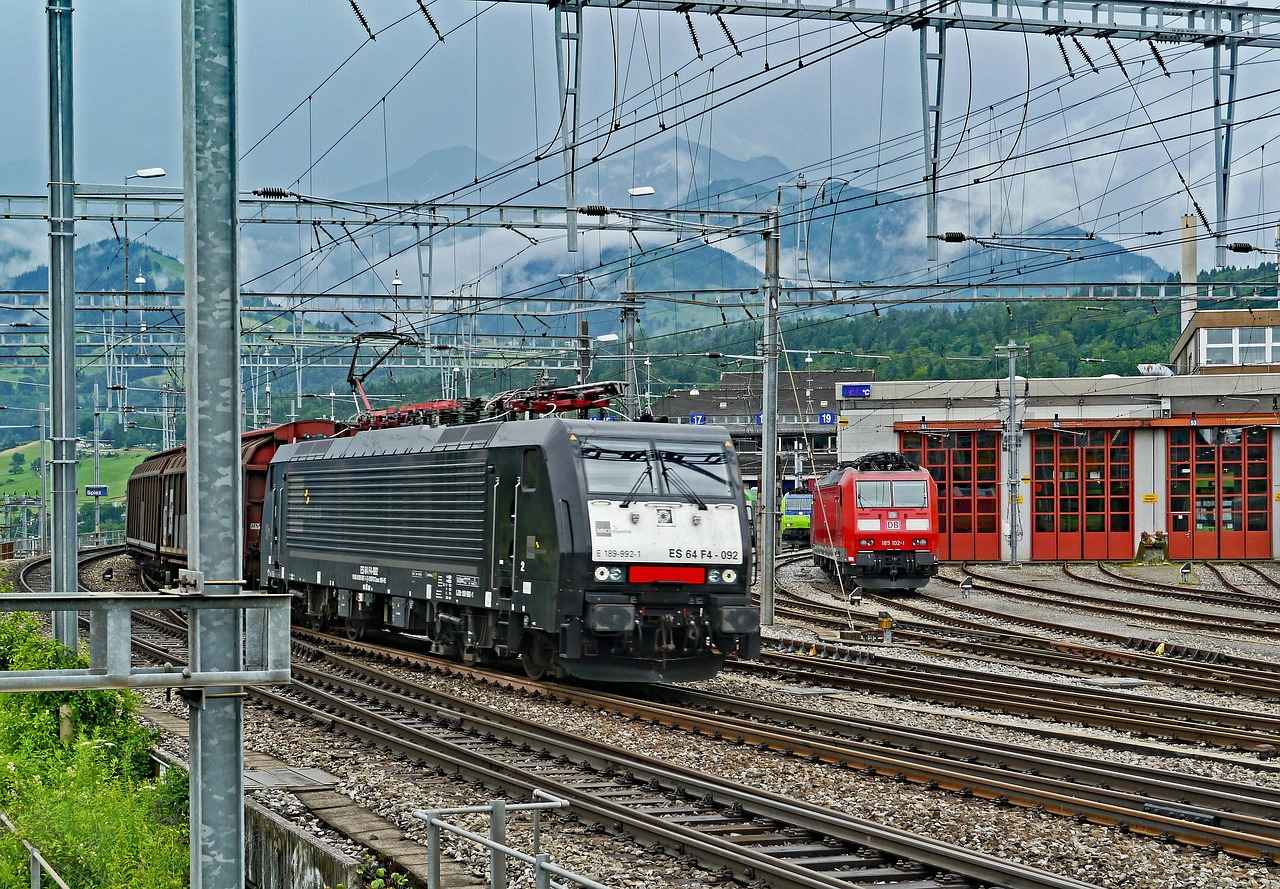
What Are the Additional Costs to Consider When Renting?
When renting a skid steer, it’s essential to understand that the basic rental fee is only one part of the overall cost. There are several additional expenses that can quickly accumulate, impacting your budget significantly. This article delves into these hidden costs, ensuring you’re fully prepared for your rental experience.
- Insurance Fees: One of the most crucial aspects of renting heavy equipment is ensuring you have adequate insurance coverage. Rental companies often require renters to have insurance to protect both the equipment and the renter from potential liabilities. Depending on the coverage you choose, this can add a substantial amount to your overall rental costs.
- Fuel Costs: Fuel is another significant expense that renters must consider. The fuel efficiency of the skid steer can vary by model, so understanding how much fuel you’ll need for your project is essential. Depending on the duration and intensity of your work, fuel costs can quickly add up, especially for long-term rentals.
- Maintenance Fees: While most rental companies ensure their equipment is in good working condition, unexpected maintenance issues can arise. Some companies may charge additional fees for maintenance or repairs that occur during the rental period. It’s important to clarify these policies before signing a rental agreement.
- Delivery and Pickup Charges: Many rental companies charge for the delivery and pickup of the skid steer. These fees can vary widely based on your location and the distance from the rental facility. Always inquire about these charges upfront to avoid surprises later.
- Attachment Costs: If you require attachments such as buckets, forks, or other implements, be aware that many rental companies charge extra for these items. Understanding the full range of attachments available and their costs is vital for accurate budgeting.
- Late Return Fees: If you need to keep the skid steer longer than originally planned, be mindful of potential late return fees. These fees can be steep, so it’s wise to plan your rental period carefully and communicate with the rental company if your needs change.
By considering these additional costs, you can create a more accurate budget for your skid steer rental. It’s crucial to ask your rental provider about all potential fees and charges to avoid any unexpected expenses. Being informed will help you make better decisions and ensure that your project runs smoothly.
In summary, while the basic rental fee for a skid steer might seem straightforward, the total cost can be influenced by various factors. By understanding and anticipating these additional expenses, you can better prepare for your rental experience and ensure that you stay within your budget.
How Important Is Insurance When Renting a Skid Steer?
When renting heavy equipment like a skid steer, insurance is a vital aspect that cannot be overlooked. It serves as a protective measure against unforeseen circumstances that could lead to significant financial loss. Understanding the various insurance coverage options available can help you make informed decisions and ensure a smooth rental experience.
Rental companies typically offer several types of insurance coverage, including:
- Liability Insurance: This covers any damage or injury that may occur to third parties or their property during the rental period.
- Damage Waiver: This option limits your financial responsibility for any damage to the skid steer, provided the damage is not due to negligence.
- Personal Accident Insurance: This insurance provides coverage for medical expenses in case of an accident while using the equipment.
Having adequate insurance is essential for several reasons:
- Financial Protection: In the event of an accident or damage, insurance can shield you from hefty repair costs and liability claims.
- Peace of Mind: Knowing that you are covered allows you to focus on your project without the constant worry of potential mishaps.
- Compliance with Rental Agreements: Many rental companies require insurance as a part of their rental agreements, making it a necessary consideration.
When selecting insurance for your skid steer rental, consider the following factors:
- Coverage Limits: Ensure that the policy provides adequate coverage for the specific risks associated with your project.
- Exclusions: Be aware of what is not covered under the policy to avoid unexpected out-of-pocket expenses.
- Cost of Insurance: Weigh the cost of the insurance against potential risks to determine if it is a worthwhile investment.
There are several strategies to manage insurance costs effectively:
- Shop Around: Compare different insurance providers and policies to find the best rates and coverage options.
- Bundle Insurance Policies: If you have other insurance needs, bundling them with the same provider may offer discounts.
- Evaluate Your Needs: Assess the specific risks of your project to avoid over-insuring and reduce unnecessary costs.
Failing to secure insurance when renting a skid steer can lead to several negative outcomes:
- Financial Liability: Without insurance, you could be held fully responsible for any damages or injuries that occur, leading to significant financial burdens.
- Legal Issues: In the event of an accident, the lack of insurance could result in legal repercussions, including lawsuits.
- Rental Denials: Many rental companies may refuse to rent equipment to individuals without appropriate insurance coverage.
In summary, securing the right insurance when renting a skid steer is not just a smart choice; it is a necessity. By understanding your options and the importance of coverage, you can protect yourself from unforeseen costs and ensure a successful rental experience.
What Fuel Costs Should You Anticipate?
When considering the rental of a skid steer, fuel costs are an essential factor that can significantly influence your overall expenses. Especially for longer projects, these costs can accumulate, impacting your budget and financial planning.
Understanding the fuel efficiency of the skid steer you plan to rent is crucial for estimating your fuel expenses accurately. Different models have varying fuel consumption rates, which can lead to substantial differences in overall costs. For instance, a skid steer that consumes less fuel per hour will naturally result in lower expenses over time, making it a more economical choice for extended use.
- Fuel Type: Skid steers typically run on diesel or gasoline. Diesel engines are generally more fuel-efficient, which can lead to lower fuel costs overall.
- Operational Hours: The more hours you operate the skid steer, the more fuel you will consume. Estimating your operational hours can help you calculate your total fuel needs.
- Terrain and Load: The type of terrain and the load being handled can also affect fuel consumption. Heavier loads and rough terrains require more power, increasing fuel usage.
To estimate your fuel costs, consider the following steps:
- Determine the fuel efficiency (miles per gallon or gallons per hour) of the skid steer model you are renting.
- Estimate your operational hours for the project.
- Calculate the total fuel needed by multiplying the fuel consumption rate by the estimated hours of operation.
- Multiply the total fuel needed by the current fuel price to get an accurate estimate of your fuel costs.
Fuel costs are often overlooked when budgeting for a skid steer rental, yet they can be a significant portion of your overall expenses. Many rental companies may not include fuel in their pricing, so it’s essential to clarify this before finalizing your rental agreement. Additionally, understanding how fuel costs align with your project timeline can help you make more informed decisions.
- Choose the right model: Opting for a more fuel-efficient skid steer can lead to substantial savings.
- Plan your operations: Efficient planning of your tasks can minimize unnecessary fuel consumption.
- Regular maintenance: Ensuring the skid steer is well-maintained can improve fuel efficiency.
In summary, while rental fees for skid steers are often the primary concern, fuel costs should also be a major consideration in your budgeting process. By understanding fuel efficiency and planning accordingly, you can manage these expenses effectively and ensure that your project remains within budget.
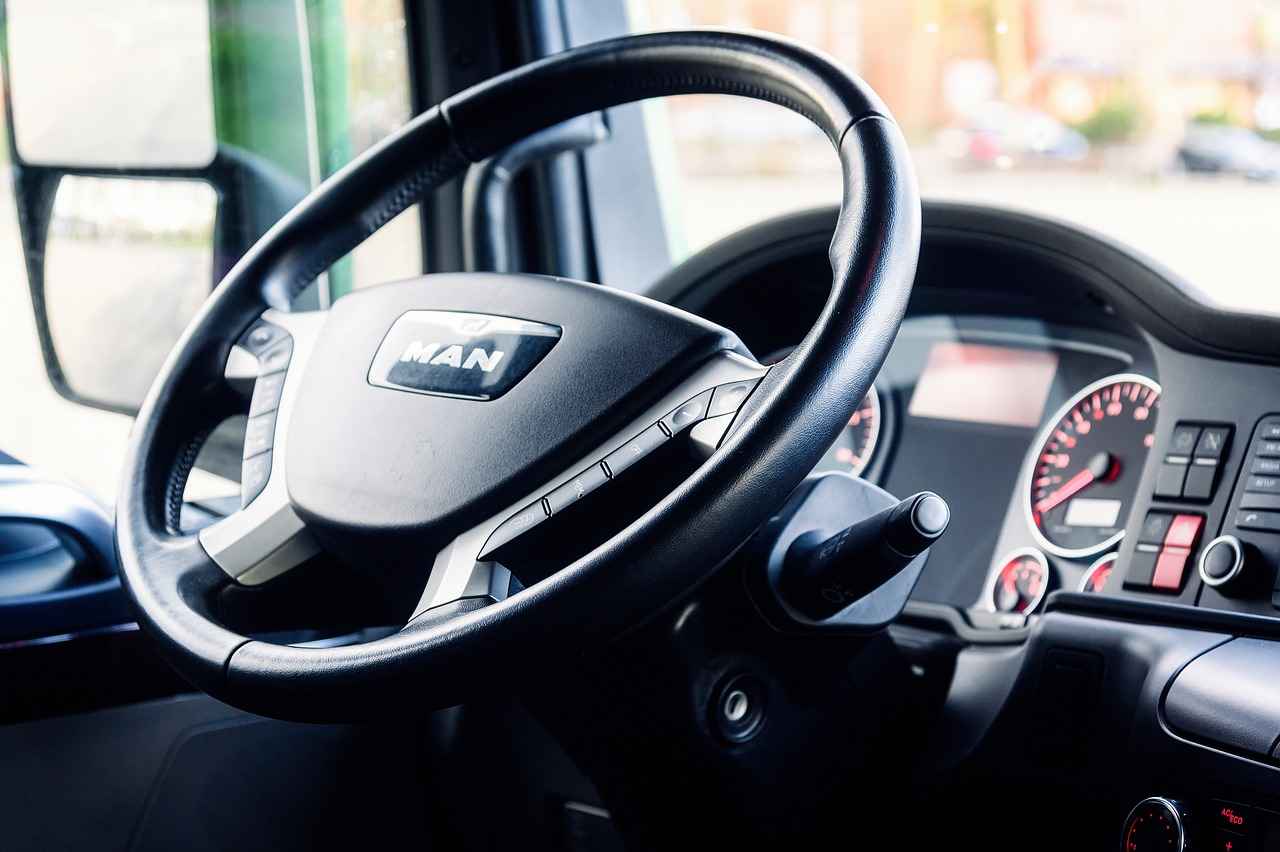
How Can You Find the Best Skid Steer Rental Deals?
When it comes to renting a skid steer, knowing how to find the best deals can save you a significant amount of money. Research and comparison are essential steps in this process. By leveraging both online platforms and local rental companies, you can uncover rental rates that fit your budget.
Conducting thorough research allows you to understand the market better. Here are some key benefits:
- Price Awareness: Knowing the average rental rates helps you identify good deals.
- Feature Comparison: Different models offer various features; understanding these can help you choose the right skid steer for your needs.
- Reputation Check: Online reviews and ratings can guide you to reputable rental companies.
Online rental platforms have revolutionized the way people find equipment rentals. Here’s how:
- Price Comparison: These platforms allow you to compare prices from multiple rental companies, ensuring you get the best deal.
- User Reviews: Reading reviews can provide insight into customer experiences, helping you avoid companies with poor service.
- Promotions and Discounts: Many online platforms offer exclusive deals and discounts that may not be available offline.
Local rental companies can be an excellent resource for finding competitive rates. Here are some advantages:
- Lower Overhead Costs: Local businesses often have fewer expenses compared to larger chains, allowing them to offer better prices.
- Personalized Service: Smaller companies often provide tailored services and advice, ensuring you find the right equipment.
- Flexible Terms: Local companies may offer more flexible rental terms compared to larger corporations.
When comparing rates, it’s crucial to consider several factors that can affect the total cost:
- Rental Duration: Short-term rentals may have higher daily rates, while long-term rentals often come with discounted rates.
- Equipment Type: Different skid steer models come with varying rental prices based on their capabilities.
- Additional Costs: Be aware of extra fees such as delivery, insurance, and attachments, which can significantly increase the overall cost.
Negotiating rental rates can lead to significant savings. Here are some tips:
- Ask About Discounts: Always inquire if there are any available discounts for long-term rentals or off-peak seasons.
- Bundle Services: If you need multiple pieces of equipment, ask if the rental company offers bundle deals.
- Build Relationships: Establishing a good rapport with rental companies can lead to better rates and terms in the future.
In summary, finding the best skid steer rental deals requires a combination of research, comparison, and negotiation. By utilizing online platforms and local rental companies, you can maximize your savings and ensure that you select the right equipment for your project.
What Are the Benefits of Online Rental Platforms?
In today’s digital age, online rental platforms have revolutionized the way consumers access rental equipment, including skid steers. These platforms offer a variety of benefits that can enhance the rental experience, making it easier for users to find the right equipment at competitive prices.
One of the primary advantages of using online rental platforms is the ability to compare prices across multiple vendors quickly. This feature allows renters to evaluate various options without the need to visit each rental store in person. By simply entering their requirements, users can see a range of prices, helping them identify the most cost-effective solutions for their projects.
Online platforms often include user reviews and ratings, providing valuable insights into the quality of the equipment and the reliability of the rental companies. These reviews can guide potential renters in making informed decisions, as they can see firsthand accounts of other users’ experiences. This transparency fosters trust and helps users avoid potential pitfalls associated with renting equipment.
Another significant benefit is the extensive inventory available on these platforms. Users can access a wide variety of skid steers and attachments, ensuring they find the right equipment tailored to their specific needs. This vast selection is particularly beneficial for specialized projects that may require unique machinery not readily available at local rental stores.
Online rental platforms typically offer flexible rental durations, allowing users to choose from short-term or long-term rentals based on their project timelines. This flexibility is crucial for contractors and DIY enthusiasts alike, as it provides the ability to rent equipment for exactly as long as needed without incurring extra costs.
Many online rental platforms promote transparent pricing, where all costs are clearly outlined upfront. This transparency helps users understand the total cost of renting equipment, including any additional fees for delivery, insurance, or attachments. By knowing these costs in advance, renters can budget more effectively and avoid unexpected expenses.
Online platforms often feature dedicated customer support that can assist users in navigating their rental options. Whether it’s answering questions about equipment specifications or providing guidance on rental policies, this support can enhance the overall rental experience. Many platforms also offer live chat features for immediate assistance, further improving accessibility.
The ability to book equipment online is another significant advantage. Users can browse, select, and reserve their desired skid steers from the comfort of their homes, saving time and effort. This convenience is especially beneficial for busy professionals who may not have the luxury of visiting multiple rental locations.
Many online rental platforms partner with local rental companies, providing users with access to equipment that is readily available in their area. This local availability can lead to faster delivery times and reduced transportation costs. Additionally, some platforms offer delivery services, bringing the rented equipment directly to the job site, which can save valuable time and resources.
In summary, online rental platforms provide a host of benefits that simplify the process of renting skid steers and other equipment. From competitive pricing and user reviews to flexible rental options and enhanced customer support, these platforms cater to a wide range of needs, making them an invaluable resource for anyone looking to rent equipment efficiently.
How Can Local Rental Companies Offer Better Rates?
When it comes to renting heavy equipment like skid steers, many renters often overlook the advantages of working with local rental companies. These businesses frequently have lower overhead costs compared to larger, national chains, which can translate into more affordable rental rates and favorable terms. In this section, we will explore how local rental companies can provide these benefits, and what you should consider when choosing a rental partner.
One of the primary reasons local rental companies can offer better rates is their operational efficiency. Since they typically have fewer layers of management and lower operational costs, they can pass these savings on to customers. Additionally, many local businesses have established strong relationships with their suppliers, allowing them to negotiate better pricing on equipment and parts.
Local companies often pride themselves on providing personalized service. This means they can tailor rental agreements to meet the specific needs of their clients. For instance, if you require a skid steer for a short-term project, a local rental company may offer flexible rental durations, which can be a significant advantage over larger chains that may have more rigid policies.
Another benefit of working with local rental companies is their responsiveness. Because they are often smaller, these businesses can react quickly to customer inquiries and requests. If you need to make last-minute changes to your rental agreement or require additional equipment, local companies are usually more willing and able to accommodate your needs.
Local rental companies often have a deep understanding of the geographical area they serve. This means they can provide valuable insights into the best equipment for specific projects or terrain types. Their experience can help you choose the right skid steer and attachments, potentially saving you time and money in the long run.
Many local rental companies offer seasonal promotions or discounts for returning customers. These deals can significantly reduce your rental costs compared to standard rates. Additionally, local businesses are more likely to engage in community-oriented promotions, which can further enhance your savings.
- Reputation: Look for reviews and testimonials from other customers to gauge the company’s reliability.
- Equipment Availability: Ensure that the company has the specific skid steers and attachments you need.
- Rental Terms: Compare rental agreements to see which company offers the most favorable conditions.
- Customer Service: Assess how responsive and helpful the staff are during your initial interactions.
In summary, local rental companies can provide better rental rates and terms due to their lower overhead costs, personalized service, and local expertise. By considering these factors, you can make an informed decision that aligns with your project needs while also saving money.
Frequently Asked Questions
- What are the average rental rates for skid steers?
Average rental rates for skid steers can range from $200 to $1,000 per day, depending on the model and location. It’s essential to shop around and compare prices to get the best deal for your project.
- How do equipment types affect rental costs?
The type of skid steer you choose significantly impacts rental costs. Standard models are generally cheaper, while high-capacity models designed for heavy-duty tasks come with a higher price tag.
- Are attachments included in the rental price?
Most rental companies charge extra for attachments like buckets or forks. Always clarify these costs upfront to avoid surprises when you receive your bill.
- How does rental duration influence pricing?
Rental duration can greatly affect your overall costs. Short-term rentals might have daily rates, while long-term rentals can offer discounts, making them more economical for extended projects.
- What additional costs should I consider when renting?
Beyond the rental fee, consider costs for insurance, fuel, and potential maintenance. These can add up quickly, so budgeting for them is crucial.
- How can I find the best skid steer rental deals?
Research is key! Check online rental platforms for competitive pricing and read user reviews. Local rental companies can also offer personalized service and better rates.



